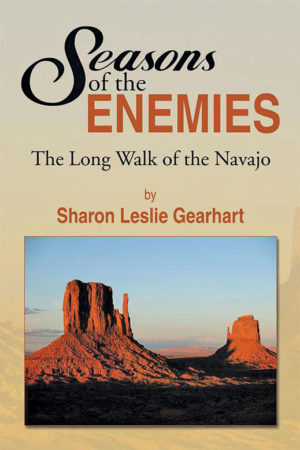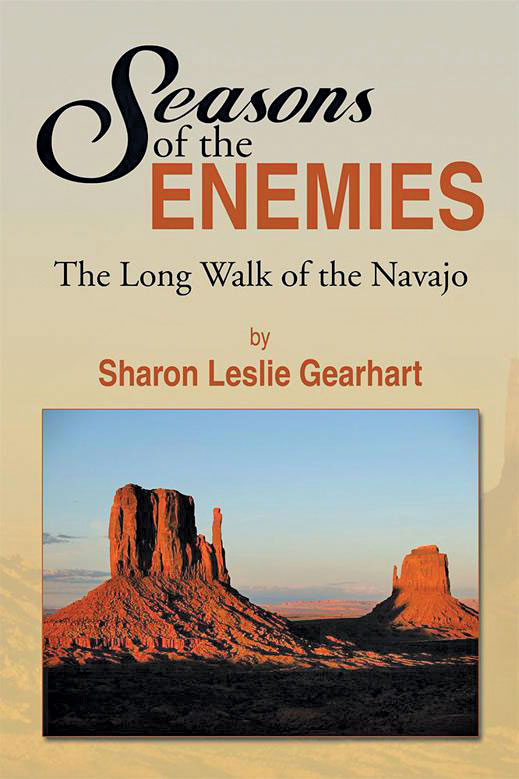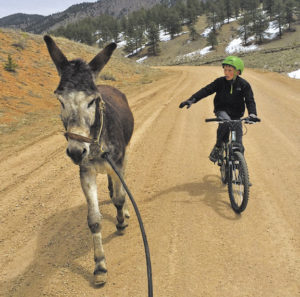 By Sharon Leslie Gearhart
By Sharon Leslie Gearhart
Xlibris.com: 2015, 245 pp, $19.95
SC-ISBN: 987-1-4931-1
Reviewed by Virginia McConnell Simmons
The subtitle will lead prospective readers to believe this volume to be an account of the exodus of Navajo Indians to Fort Sumner. Instead, it is an amalgam of detailed descriptions of ceremonies that are incorporated into the narrative, descriptions of military personnel and events related to the period of 1858 to 1864, some text that appears to be historical fiction, approximately 25 pages of very well-researched history devoted to the Army’s campaign at Canyon de Chelly in 1863-1864 and a two-page epilogue about the internment at Fort Sumner. Although at times readers may not feel certain as to whether various parts of the text are historical fiction, anthropology or history, general readers with a special interest in the Diné will enjoy the book. They also will enjoy descriptions of the setting and activities in it at Black Mesa near Kayenta, New Mexico, Tseigi Canyon, the surrounding region and especially Canyon de Chelly itself.Gearhart’s story has good guys like the main character Strong Horse Man, several contemporary Navajo leaders and military men and brief nods to humanitarian figures such as Henry Dodge and Thomas Keam. It also has bad guys like Ute Indians, none of whom are good in Gearhart’s account, and like Colonel James Carlton (sic), although Kit Carson escapes the character assassination that revisionist writers prefer to bestow upon him these days. Activities of Navajo warriors who are preparing for an inevitable confrontation with the Army appear in Gearhart’s tale in such a way that readers will gain some understanding of how and why Navajo hostility and fear increased between 1858 and 1863. The Navajo Campaign itself is told in about 25 pages, and the Long Walk is omitted.
[InContentAdTwo] Some historical background about the enmity that had existed for two and a half centuries between Spanish-speaking colonists and settlers would have been useful, in order to show why Navajos had always been the most feared of raiders and why the U.S. Army was determined to bring the Navajos to heel after the Mexican territory was taken over. Similarly, readers might be interested in learning how the survivors of the Navajo campaign transformed into a peaceful people, developing their livestock industry, textile and jewelry crafts as trade items, relationships with trading posts and political organization with Indian agencies and evolving government programs.
Gearhart, a retired educator who lived and taught in Navajo country for a dozen years, has offered her readers a book that will increase their understanding of the people during one short period when a large portion of this tribe underwent life-changing tragedy.





